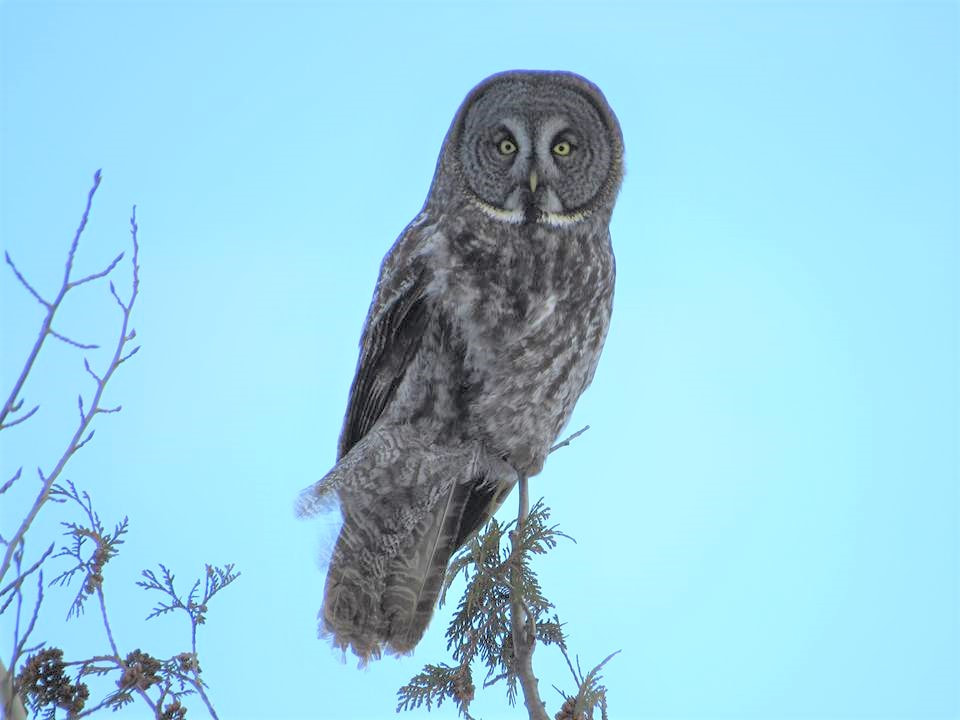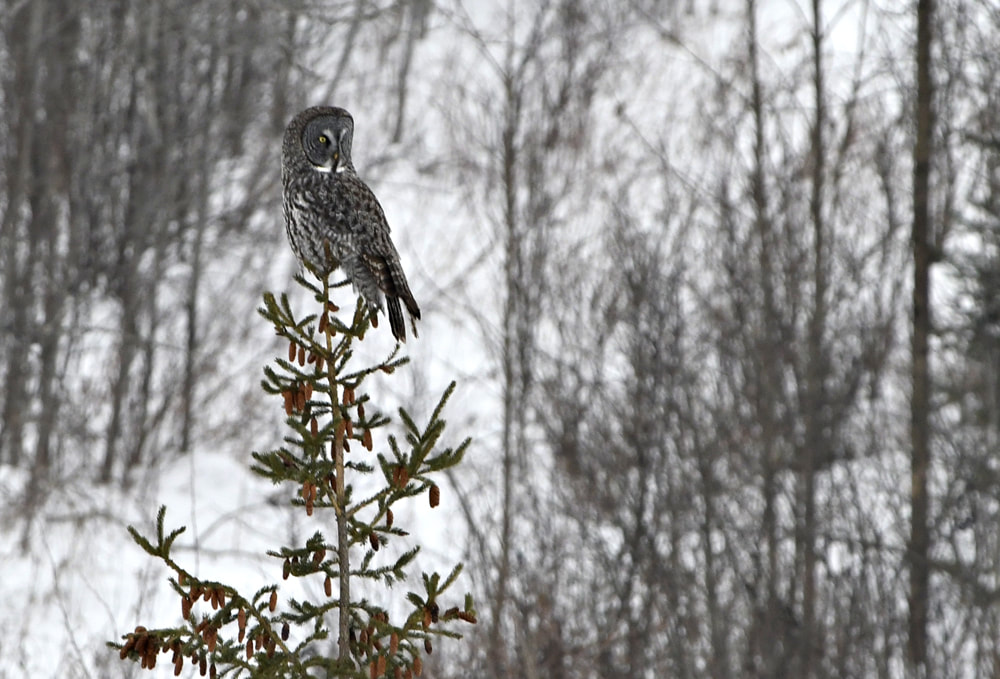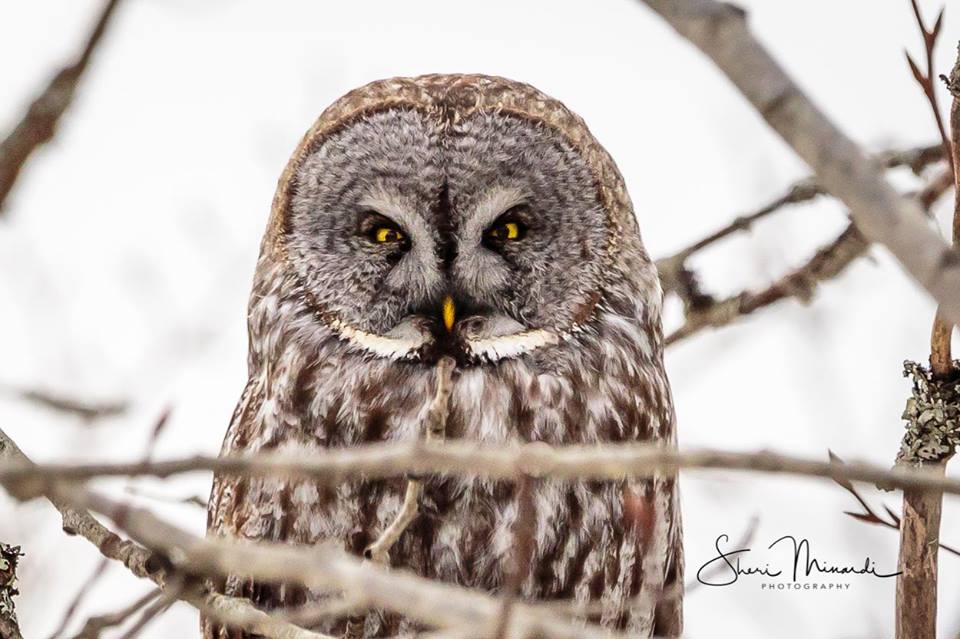| This year, quite a few Great Gray Owls are spending the winter in the Central Algoma area. Two have been seen on St. Joseph Island, one has been seen in the Bruce Mines area and two have been seen in the Thessalon area. There’s also been one confirmed Great Gray Owl in nearby Hessel, Michigan and a few more unconfirmed sightings on the Michigan side of the St. Marys River. One was also photographed up in Wawa, two hours north of Sault Ste. Marie. Who knows how many other ones are around that have avoided human detection so far. |
| The Great Gray Owl is the largest owl species in North America. Their wingspan can be up to a metre and a half long and they weigh anywhere from 700g to 1700g. Like many raptor species, the females are generally larger than the males. Their typical habitat is dense, wet evergreen forests with nearby open meadows. They feed on voles, mice, moles, lemmings and any other small mammals that they can get their claws on. They use old raptor or raven nests instead of building their own and usually lay 2-5 eggs each season. To learn more about the basics of the Great Gray Owl, visit their All About Birds page here. |
| Now, why are we seeing so many Great Gray Owls this year? They are an irruptive species, meaning that there are years that they travel further out of their normal range than usual. In the winter of 2004/2005, a huge Great Gray Owl irruption occurred and hundreds of individuals made it down to Southern Ontario, where they normally are not seen at all. We're far from that this year, but maybe we are experiencing a mini-irruption here locally. What causes an irruption year? The exact science is not well understood, but there are some theories. If there is an unusually high abundance of food during a particular breeding season, more eggs will be laid and the survival rate of these young birds will increase significantly. With the massive increase in population, some of the owls will be forced to travel further south to establish their own winter territories. Another reason could be that there is a shortage of food in their usual winter range, so they come further south to find the food that they need. Since Great Gray Owls are typically found in remote, hard to access areas, it's hard to conduct the research that is necessary to determine the exact cause of these irruptions. At least we do have the ability to enjoy them when they happen! |
| Besides all the Great Gray Owls, this winter has also been pretty good for the other owl species. Our two year-round residents, Barred Owl and Great Horned Owl, have been reported frequently. In addition to the big Michigan numbers, a few different people have observed a Snowy Owl in the fields in the Desbarats area, but no good photos have been taken of it yet. There's also been a Snowy Owl that's been hanging around downtown Sault Ste. Marie all winter. A Northern Saw-whet Owl, a species that typically winters further south than here, spent a few hours perched on a wheelbarrow on St. Joseph Island. A Boreal Owl was photographed in a maple bush on St. Joseph Island and a Northern Hawk Owl was recorded during the Desbarats Christmas Bird Count. A Long-eared Owl, another species that typical winter more south, was heard calling recently just west of Sault Ste. Marie. That leaves only three of Ontario's owl species that haven't been found this winter in the area: Short-eared Owl, Eastern Screech Owl and Barn Owl. Short-eared Owls were seen in Desbarats during their migration north last spring (see photos here) and again on their way back down in the fall, this time in the Bar River area (see photos here). Eastern Screech Owl and Barn Owl are species that we don't expect to see in the area at any time of the year. |
| So who knows how long it will be until we have another winter like this in the area, but we will enjoy it while it lasts. We're still waiting for our first owl to be seen from our brand new TKC Conservation Centre here in Desbarats! A big thanks goes out to all the photographers who allowed their photos to be used for this piece. Some of the photos include links when you click on them so that you can see more photos by these wonderful wildlife photographers! If you're interested in learning more about the birds in our area here, you can join the Algoma District Birding Facebook group or shoot me an email directly to [email protected]. |
















 RSS Feed
RSS Feed